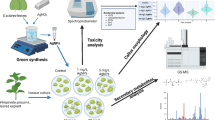Abstract
Characteristics of fungal species tolerant to high levels of metals in natural environment can be amplified by isolation and selection of resistant mutants. Step-by-step culturing led to identification of highly stable Co-resistant (CoR) mutants of A. nidulans. Based on two distinct morphological features, Co-resistant mutants were categorized as CoRI and CoRII. The two mutants varied in their growth behavior and colony morphology that were reflected in supplemented as well as unsupplemented growth media over the generations. As compared to the CoRI, CoRII mutant exhibited sparse mycelia and conidiation but secreted higher amount of melanin. CoR mutants could tolerate up to 2.5mM Co in the medium, however, required a threshold concentration of 0.25mM Co for optimal growth and germination. Absence of Co in the medium caused a stressful situation for the CoR mutants and led to the secretion of a white extracellular precipitate found to be a glycoprotein. In response to interactions with Co-ions, CoR mutants produced oxalic acid and bioprecipitated Co as Co-oxalate providing scope for metal reclamation as well as oxalic acid extraction. The mutants could help to recover the insoluble Co-oxalate salt from aqueous solutions by entrapping it in their growing mycelial meshwork.
Similar content being viewed by others
References
Gadd GM (1990) Fungi and yeasts for metal accumulation. In: Microbial Mineral Recovery (Ehrlich H & Brierley CL eds). McGraw-Hill, NY, pp 249–275
Gadd GM (1994 F) Interactions of fungi with toxic metals. In: The Genus Aspergillus: From taxonomy and genetics to industrial application (Powell KA, Renwick A & Peberdy JF eds). (FEMS Symposium No. 69), Plenum Press, NY, pp 361–374
Tomsett AB (1994) Genetics and Molecular Biology of Metal Tolerance in Fungi. In: Stress Tolerance of Fungi (Jennines DH ed). Marcel Dekker INC, NY, pp 69–95
Nies DH (1992) Resistance to cadmium, cobalt, zinc and nickel in microbes. Plasmid 27:17–28
Wood HG & Zwolinski GK (1976) Transcarboxylase: Role of biotin, metals, and subunits in the reaction and its quarternary structure. Crit Rev Biochem 4:47
Gadd GM (1992) Metals and microorganisms: A problem of definition. FEMS Microbiol Lett 100:197–204
Saxena P, Bhattacharyya AK & Mathur N (2006) Nickel tolerance and accumulation by filamentous fungi from sludge of metal finishing industry. Geomicrobiology Journal 235: 330–340
Tripathi P & Srivastava S (2007) Development and characterization of nickel accumulating mutants of Aspergillus nidulans. Indian J Microbiol 47:241–250
Gadd GM (1988) Accumulation of metals by microorganisms and algae. In: Biotechnology-A comprehensive Treatise (Rehm HJ ed). Special Microbial Process. Vol 6 (b). VCH Verlagsgesellschaft Weinheim, Germany pp 401–433
Tomsett AB, Hodges KE, Cooley RN & Thurman DA (1989) Metal resistance in Aspergillus nidulans. In: Metal Ion Homeostasis-Molecular Biology and Chemistry (Hamer DH & Winge DR eds). Alan R. Liss, NY, pp 375–384
Venkateswerlu G & Sastry KS (1973) Interrelationships in trace-element metabolism in metal toxicities in a Cobalt-resistant strain of Neurospora crassa. Biochem J 132: 673–680
Cooley RN, Haslock HR & Tomsett AB (1986) Isolation and Characterization of Cadmium-resistant Mutants of Aspergillus nidulans. Curr Microbiol 13:265–268
Venkateswerlu G & Stotzky G (1986) Copper and cobalt alter the cell wall composition of Cunninghamella blakesleeana. Can J Microbiol 32:654–662
Venkateswerlu G & Stotzky G (1989) Binding of metals by cell walls of Cunninghamella blakesleeana grown in the presence of copper and cobalt. Appl Microbiol Biotechnol 31:619–625
Venkateswerlu G, Yoder MJ & Stotzky G (1989) Morphological, ultrastructural and chemical changes induced in Cunninghamella blakesleeana by copper and cobalt. Appl Microbiol Biotechnol 31:204–210
Fomina M, Hillier S, Charnock JM, Melville K, Alexander IJ & Gadd GM (2005) Role of oxalic acid over-excretion in toxic metal mineral transformations by Beauveria caledonica. Applied and Environmental Microbiology 71: 371–381
Gadd GM (2004) Mycotransformation of organic and inorganic substrates. Mycologist 18:60–70
Bobbitt TF, Nordin JH, Roux M, Revol JF & Marchessault RH (1977) Distribution and conformation of crystalline nigeran in hyphal walls of Aspergillus niger and Aspergillus awamori. J Bacteriol 132:691–703
Gupta R & Mukerji KG (1982) Nigeran production in some Aspergillus and Penicillum species. Folia Microbiol 27: 38–42
Strandberg GW, Shumate SE & Parrott JR (1981) Microbiol cell as biosorbents for heavy metals: accumulation of uranium by Saccharomyces cerevisiae and Pseudomonas aeruginosa. Appl Environ Microbial 41(1):237–245
Volesky B, May H & Holan ZR (1993) Cadmium biosorption by Saccharomyces cerevisiae. Biotech Bioeng 41:826–829
Paton WHN & Budd K (1972) Zinc uptake in Neocosmospora vasinfecta. J Gen Microbiol 72:173–184
Author information
Authors and Affiliations
Corresponding author
Rights and permissions
About this article
Cite this article
Tripathi, P., Srivastava, S. Mechanism to combat cobalt toxicity in cobalt resistant mutants of Aspergillus nidulans . Indian J Microbiol 47, 336–344 (2007). https://doi.org/10.1007/s12088-007-0061-3
Received:
Accepted:
Published:
Issue Date:
DOI: https://doi.org/10.1007/s12088-007-0061-3




